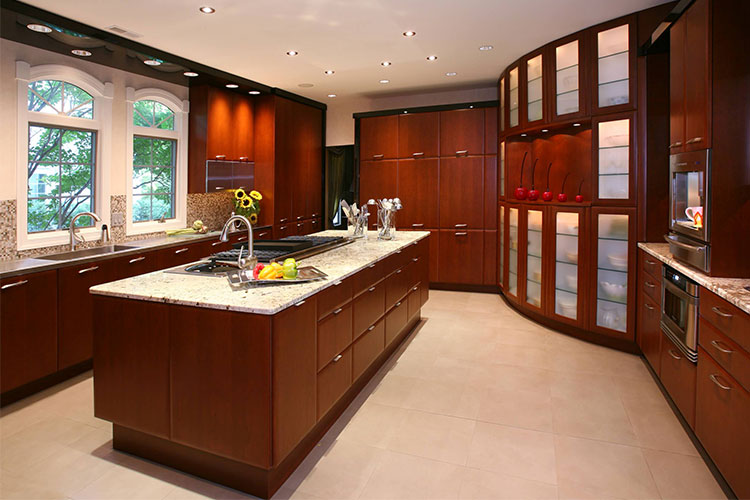
8 Incredible Types of Kitchen Cabinet Doors and Drawers
Pick a pocket or flip for hydraulic. These alternatives to standard cabinet doors offer more personalized functionality
Don't resign your new kitchen to standard, everyday cabinet doors and drawers. Make it extra functional and extra beautiful with cabinetry that utilizes every square inch, camouflages potentially messy areas or accents the unique parts. See if these cabinet doors and drawers can enhance your kitchen's design.
Corner drawers
These are a twist on the corner cabinet, pulling out from the corner. You usually have to bend over backward or crawl on your hands and knees to find items inside a corner cabinet, but these fully accessible drawers help solve that problem.
These drawers may not be available from every cabinetry company; check before settling on a manufacturer.
Track doors
Consider eliminating all of your swinging doors and place your cabinet doors on a track instead. These cabinet doors slide side to side on a ball-bearing track. Slide one door in front of the other to access the inside of each cabinet.
This system can make things easier, but you can't have every door open at the same time, unlike with traditional side-hinged doors. Also, some homeowners consider the track an eyesore, especially in more traditional kitchens. Look into track hardware with an oil-rubbed-bronze finish for a warmer look.
Pocket doors
Pocket doors aren't just for your home’s doorways – use them to hide heavily used task or prep areas in your kitchen. A small internal pocket (usually about 3 inches) is built into each side of the cabinet. When the doors are open, they can look just like any other cabinet door. But when they close, they slide back into themselves. They're perfect for a kitchen – isn't bumping your shin or elbow on a cabinet door the worst?
Flip-up doors
Hydraulic mechanisms help raise these kinds of cabinet door up, rather than you opening them with the traditional sideways motion.
These are also known as parallel lift-up doors. They're great for specialty areas – such as this microwave station – where the door needs to be completely out of the way.
Sliding doors
These cabinet doors slide horizontally to the right and to the left to open up prep or storage space. Specialty hinges applied to the top, bottom and middle allow them to completely camouflage what's inside, like this appliance center, making for a tidy kitchen.
Get a price range for a setup like this before adding it to your wish list. The hardware can be expensive, and you'll need a cabinet installer who's familiar with it.
Tambour doors
Also known as a garage door, the tambour door is perfect for hiding small appliances used on a daily basis – like the blender, coffee maker or toaster.
The door usually opens from top to bottom (some open from side to side), sliding up and down on a track inside the cabinet. Thin horizontal strips of wood with a fabric backing allow the wood to roll over the inside top of the cabinet when the door is open.
Glass-front drawers
Like glass-front cabinetry, glass-front drawers can make a kitchen look bigger and help you stay organized. This kitchen has glass-front drawers that store dry food items – showing them off is all part of the design. Many glass-front drawers have a 2 or 3-inch space right behind the glass that you can keep filled with food so the drawer always looks full. You don’t want to show off an empty drawer after mac-and-cheese night.
Custom drawers
Get creative with your drawers – don't be afraid to show off your style. Old-fashioned vegetable and fruit crates were turned into wonderfully innovative cabinet drawers here. The look is not for every design style, sure, but it's great for those who want to take a risk.
Tip: Many DIY drawers don’t have internal hardware. A little beeswax can help them glide in and out smoothly.
Not ready for something this extreme? Try adding playful knobs or pulls to your cabinetry.
This post was written by the Houzz Content Team and featured on Houzz.com.